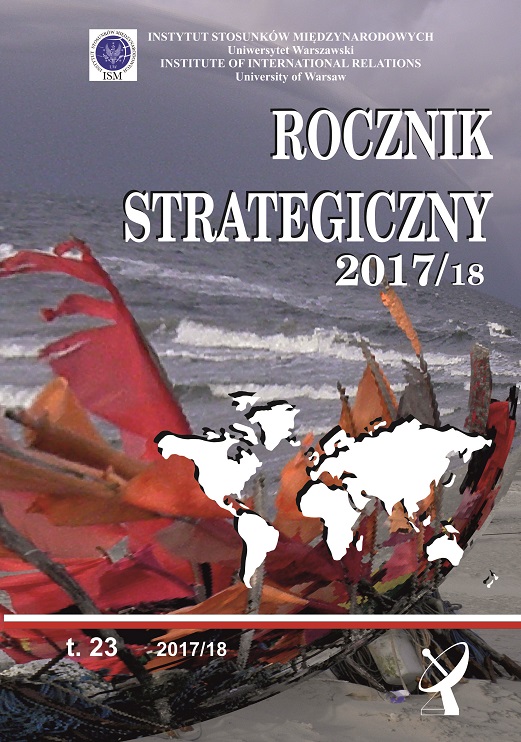Światowy wirus terroryzmu
The world’s terrorism virus
Author(s): Sebastian WojciechowskiSubject(s): Politics, Economy, Geography, Regional studies, Sociology, Political history, Social history, Geopolitics
Published by: Wydawnictwo Naukowe Scholar Sp. z o.o.
Keywords: virus of terrorism; terrorism; ISIS; right-wing terrorism; left-wing terrorism; cyberterrorism; “terrorism pandemic”
Summary/Abstract: Although the data collected by Esri Story Maps team and PeaceTech Labdemonstrates that 2017 saw a decline in the number of terrorist attacks around theworld, and ISIS in Syria and Iraq was nearly destroyed, this does not mean that theterrorist threat has expired. This threat can be compared to a virus which continuesto be dangerous and keeps attacking, using different methods in different parts of theworld. In this context, several important research questions should be asked about thescale and characteristics of modern terrorism on the one hand, and on the other, onits future, for example, its further evolution and escalation, its forms, or the potentialtactics and strategies that may be used by terrorists. Some experts anticipate thatfurther serious evolution and escalation of terrorist attacks should be expected inthe future. This evolution will be marked not only by an increase in the number ofattacks, but above all by even greater diversification of terrorist forms and methods,including the use of, for example, drones, cyberterrorism or chemical, biological orradiological agents. Another manifestation of this evolution will be the escalation ofattacks on Islamist, as well as extreme right, leftist, separatist and other grounds. Thisfollows from the connection of terrorism with many different phenomena, such asthe influx of migrants. In this context, it is necessary to take into account the use ofterrorism by extremist groups (e.g. right-wing or left-wing) opposing or supporting,for various reasons, the influx of immigrants/refugees and its consequences. In orderto present the scale and characteristics of modern terrorism, and to show potentialnew trends, the author analyzes three important reports on the terrorist threatpublished in 2017 by the US Department of State, the National Consortium for theStudy of Terrorism and Responses to Terrorism (START) University of Marylandand Europol.
Journal: Rocznik Strategiczny
- Issue Year: 2017
- Issue No: 23
- Page Range: 342-355
- Page Count: 14
- Language: Polish

